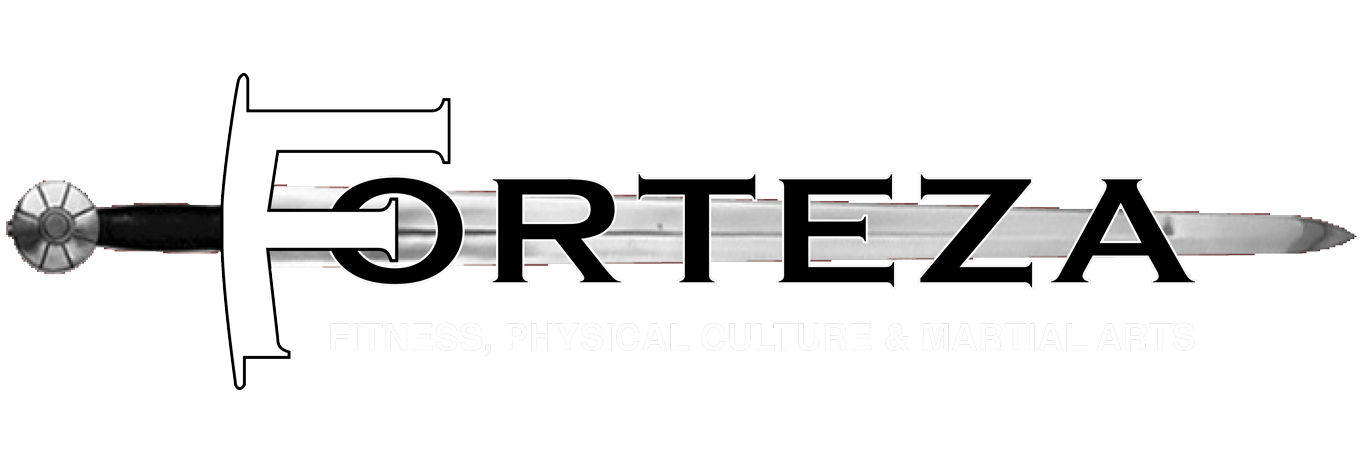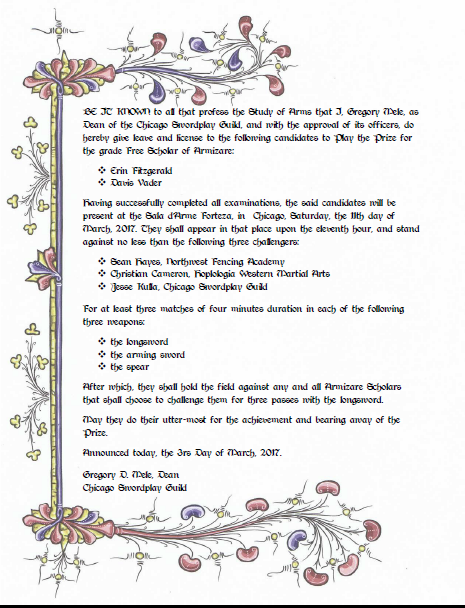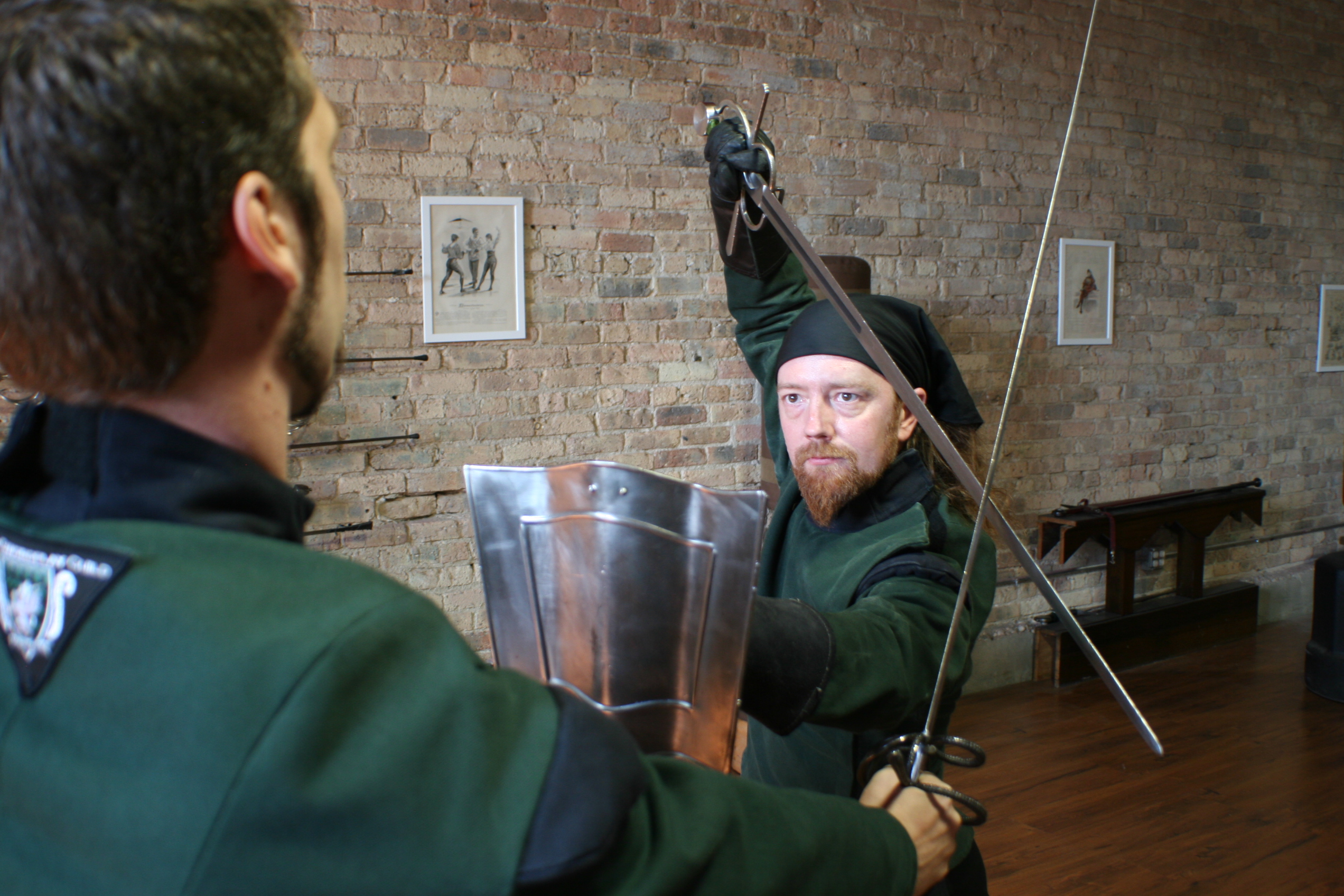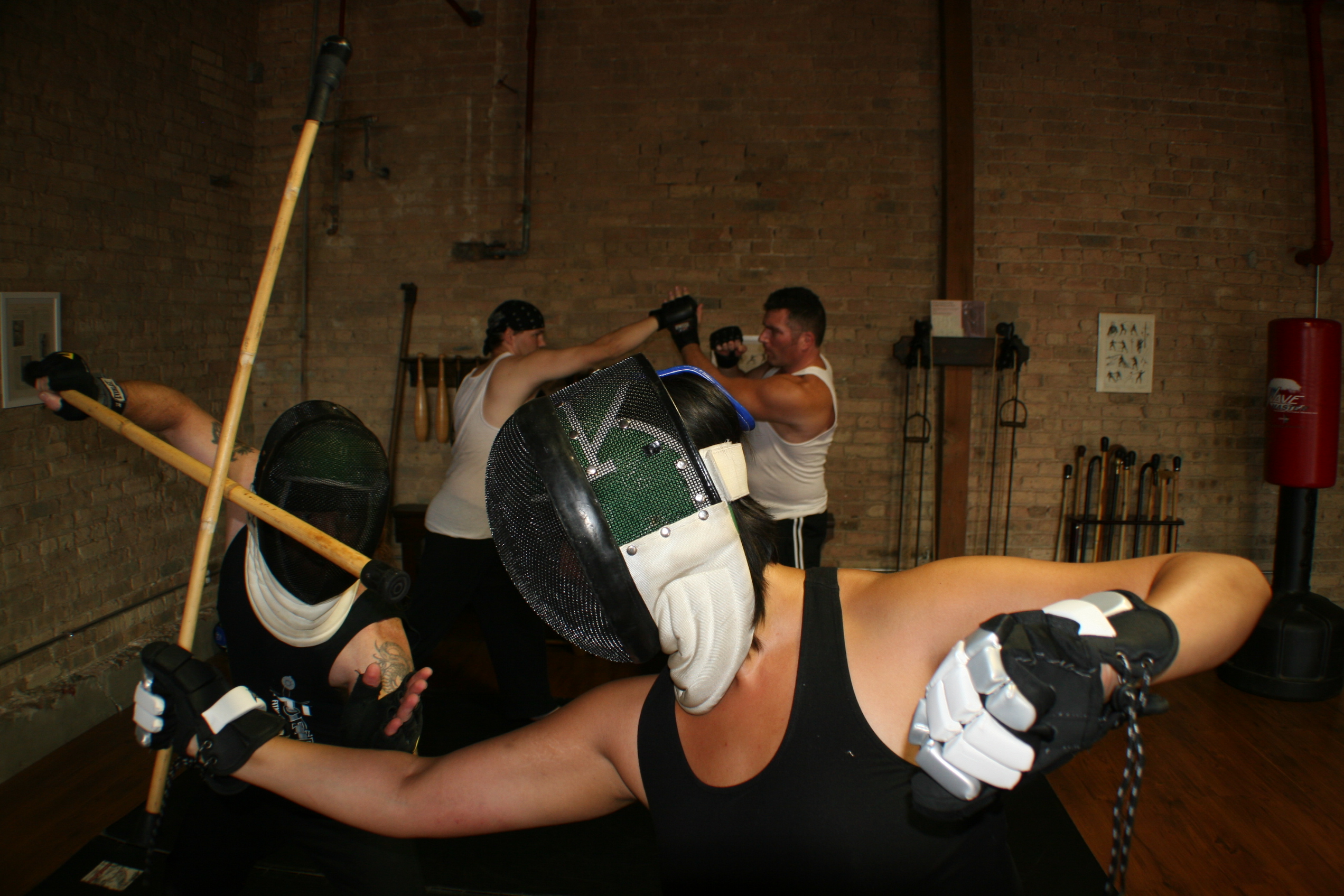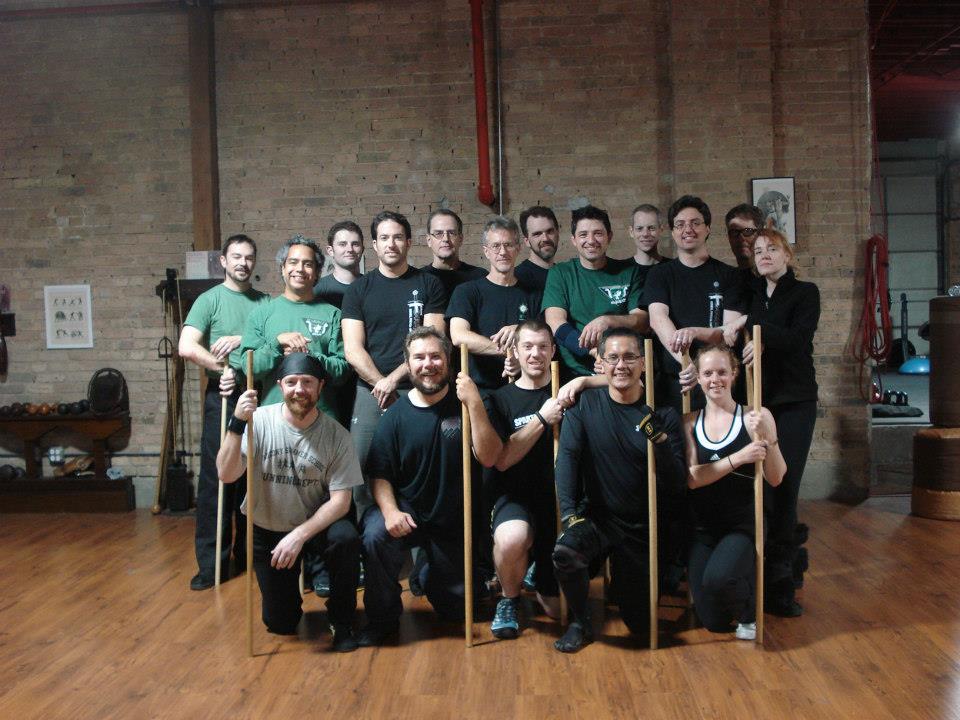2012: The Year in Martial Arts
From the clash of swords to a unique program for personal protection and self-defense, Forteza’s martial arts programs are not quite like anything else you’ll find in Chicago. Some of our programs have a long history in the city that precedes the studio’s opening by over a decade, while we are pleased to have given others their start.
HISTORICAL SWORDSMANSHIP: THE CHICAGO SWORDPLAY GUILD
Martial arts training at Forteza began with the Chicago Swordplay Guild, the city’s only dedicated school for the study of medieval and Renaissance martial arts. In 2012 our new digs allowed us to greatly expand our class offerings in both Armizare (medieval martial arts) and Renaissance Swordsmanship.
Our Introductory, or “Taster”, classes were offered in two separate tracks, a 12-week session on Saturday mornings and a 6-week, twice-weekly session on Monday and Wednesday evenings; both tracks attracted a steady number of new swordplay students. Once the basics were learned, CSG members had a choice of two Novice/Foundation classes per week, firming up basic theory and technique.
Armizare saw a significant spike in new students from a wide variety of backgrounds, age groups, and interests that drew them to the sword. The influx of new students meant that our Foundations classes have routinely been full and quite lively, as students take the basic lessons of stance, movement, body mechanics and simple attacks and defenses and learn to refine their skills and expand their application. Our expanded schedule also allowed us to introduce a dedicated Abrazare (close quarter combat) class where students learned basic grappling safety skills, body mechanics, guards, fundamental throws and joint locks, and the nine “Masters” of dagger combat: nine core concepts related to line of attack and type of cover (one or two-handed) upon which the entire, extensive curriculum of nearly 80 formal techniques, and countless variations, can be organized.
Focus classes were organized in bi-or-tri monthly themes, and included “Using Provocations to Break Distance”, “Advanced Use of the Twelve Poste”, “Using Complex Attacks”, “Mechanics of Breaking and Exchanging Thrusts”, and “Extrapolation and Improvisation”. In the dedicated Scholar’s class, students were introduced to two new weapons, the arming (one-handed) sword, and the spear. A number of students successfully completed their basic proficiency exams in the arming sword, and several more will be testing in the spear this February, two necessary steps on the path to the Free Scholar rank.
In the Renaissance Swordsmanship track, our weekly “Focus’” class on specific topics, open to all levels, proved to be most popular; topics covered this year included “Building an Aggressive Defense Using the Guards”, “Cuts and Their Counters”, and “Pressing the Attack”.
With a dedicated 90-minute class of their own on Saturday afternoon, advanced students spent the year focusing on advanced tactics in single rapier, including feints and invitations, and exploring Salvatore Fabris’ variations on his basic guards.
On Monday nights we instituted a Bolognese Swordsmanship Study Group. Open to Scholars of either curriculum, Bolognese fencing is the bridge between the late medieval style and the elegant rapier of the 17th century. A vast curriculum containing virtually every weapon of the 16th c arsenal, although Greg has been researching the material for years, this program is in its early stages of being taught as a formal curriculum. Training focused on fencing with the sword alone; looking at not only the basic actions of attack, defense and movement, but the unique pedagogical training tool of the assalti – long solo forms that can then be applied as two-person exercises.
Finally, the highlight of the year for both sub-programs was the spring Prize Playing, featuring an impressive performance by Armizare Novice Erin Fitzgerald, and a commanding display of arms by rapier Novice Robert Rutherfoord and his graduation to Scholar level. Rob is now a rapier instructor-in-training.
THE BARTITSU CLUB OF CHICAGO
The Bartitsu Club of Chicago is Chicago’s first and only martial arts club to focus on the Victorian-era cross-training system of Bartitsu. The Club began in January 2012 with a successful one-day introductory seminar that marked the first “public” use of the Forteza studio. The seminar was followed by a twelve-lesson basic course over six weeks, culminating with an Antagonisticathlon; an event in which participants represent Victorian-era adventurers running a gauntlet of obstacles and surprise attacks by “ruffians“.
Graduates of the initial course voted to keep training and so Bartitsu joined the roster of regular weekly classes at Forteza, combining the “canonical” unarmed and cane fighting techniques recorded by E.W. Barton-Wright circa 1900 with “neo-Bartitsu” exercises, combat improvisation drills and progressive sparring. Over the coming months we were prominently featured in several news media items including articles in New City Magazine and an article and video for the Chicago Tribune. We held the second Antagonisticathlon during July and the second annual Bartitsu School of Arms event in September (see Special Workshops and Events below).
FORTEZA COMBATIVES METHOD
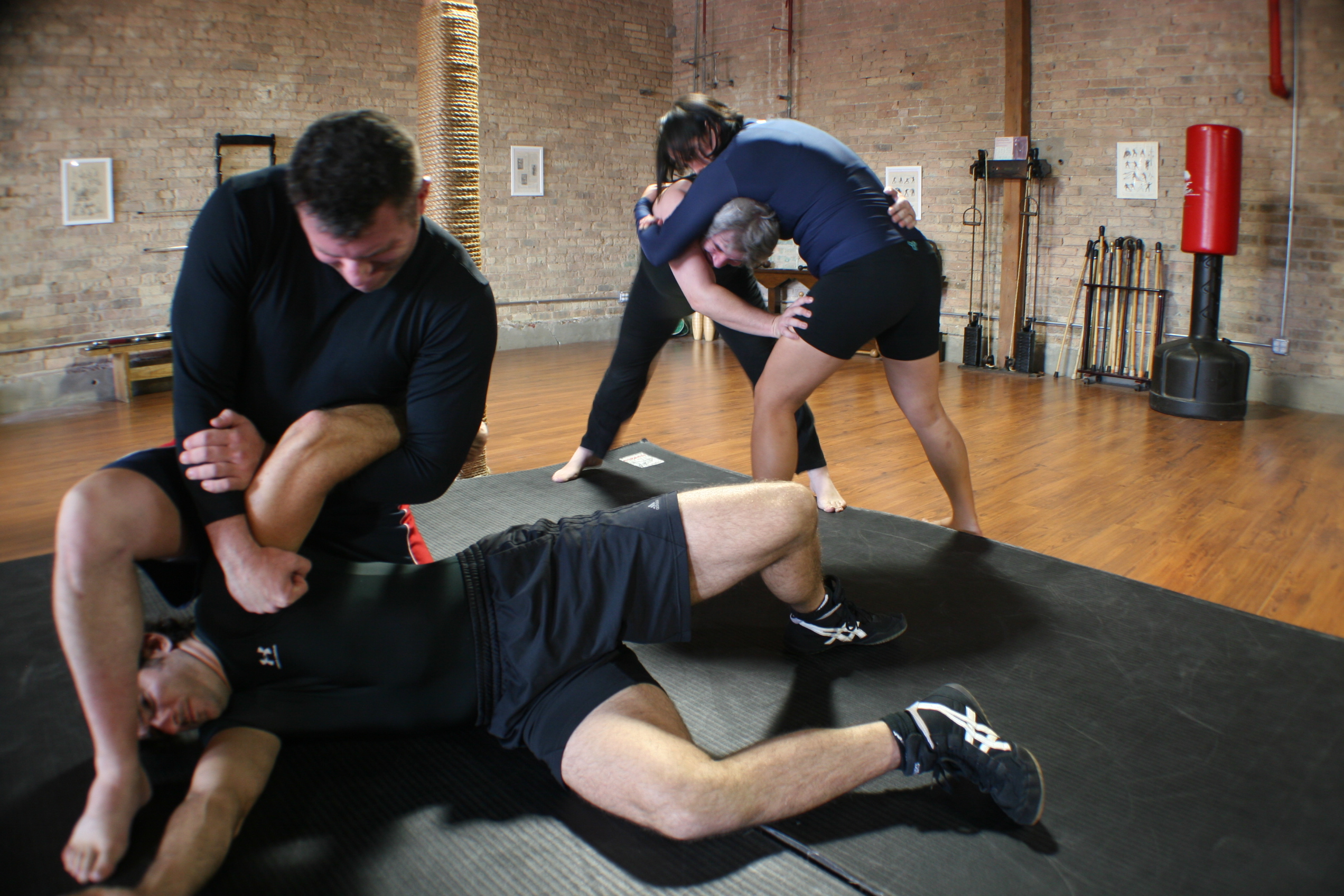 This past year also saw the launch of the Forteza Combatives program. Forteza instructor and co-owner Keith Jennings is the only fully certified Martial Blade Concepts instructor in IL and the neighboring states. For years Keith has conducted seminars in Chicago and around the Midwest, but there has never been an official home for MBC training in Chicago. The opening of Forteza has changed all that. In the first half of the year, Keith introduced a weekly MBC class, building a small, dedicated cadre of students. But by summer it became clear that students wanted a chance to train more, and to explore other ranges and components of personal protection. Thus was born Forteza Combatives!
This past year also saw the launch of the Forteza Combatives program. Forteza instructor and co-owner Keith Jennings is the only fully certified Martial Blade Concepts instructor in IL and the neighboring states. For years Keith has conducted seminars in Chicago and around the Midwest, but there has never been an official home for MBC training in Chicago. The opening of Forteza has changed all that. In the first half of the year, Keith introduced a weekly MBC class, building a small, dedicated cadre of students. But by summer it became clear that students wanted a chance to train more, and to explore other ranges and components of personal protection. Thus was born Forteza Combatives!
The Forteza Combatives Method focusing on the empty hand and counter-knife tactics from MBC, as well as combining elements of bare knuckle boxing, Catch Wrestling/ground survival, and improvised weapons training, making it one of the most well rounded self defense classes in Chicago! The program has been an unqualified success, quickly growing into one of our best-attended martial arts classes – so much so that we’ll be adding training days and special events – including a workshop with MBC creator Mike Janich – in 2013.
SPECIAL WORKSHOPS AND EVENTS
In August, Armizare students were given a look at the extensive collection of disarms, pommel strikes and throws that comprise zogho stretto, or close play, with the sword. Zogho stretto is where the lessons of the sword merge with those of abrazare and dagger, and the entire system is pulled together.
In September, the Bartitsu Club hosted the second annual Bartitsu School of Arms and Physical Culture , a three-day conference and training event. Highlights included a field trip to the historic Hegeler Carus Mansion in La Salle, IL (with a special guided tour of the mansion’s unique Victorian-era gymnasium) and a trip to see the play Susan Swayne and the Bewildered Bride, which featured Bartitsu-inspired fight scenes. Then followed two full days of training (including our third Antagonisticathlon) and socializing in the Victorian-themed side room of O’Shaughnessy’s Public House. The event was a resounding success and now we look forward to a Bartitsu New Year.
A little later that month, the Chicago Swordplay Guild hosted Armizare Academy: A Celebration of the Knightly Arts. Originally held in 2010 to celebrate the six hundredth anniversary of the composition of the massive martial arts text The Flower of Battle (il Fior di Battaglia) by the art’s founder, Fiore dei Liberi, this event, affectionately called “The 600: Prepare for Fiore!”, was such a success with attendees, that we decided to make it a recurring workshop! Since “The 602″ seemed to be missing some flair, the event was been renamed Armizare Academy. This three day retreat featured six instructors from around North America and included both a tournament and a fully-armoured deed of arms!
Finally, in November the studio the privilege of hosting Roberto Laura for an immersion in the world of Italian stick and knife fighting arts. During Roberto’s five day visit, we studied three distinct tradtions. The first was La Scuola Cavalieri d`Umiltà or the Knights of Humility. This school derives from Manfredonia, Apulia (by tradition, from the 15th century). It is a highly elegant fighting system with the knife, shepherd’s staff and the razor. The second tradition was La Scuola Fiorata– The Flowery School, from Calatabiano, Sicily. The weapons taught within this traditional dueling art are the shepherd stick and the knife. Fiorata is technically a modern school, yet in many ways it is a return to older sensibilities. The school comes from a very old – and still living – tradition called the Scuola Rutatu (Circling School), but after WWII some masters of the system were concerned with the loss of close-fighting techniques and a transition to fast, but smaller, less powerful actions and developed a new school that would counter Rutatu, producing a system which combines the elements of open and closed guards, dynamic assaults. Finally, Roberto introduced us to la Scuola Cielo e Meraviglia (the School of Heaven and Its Marvels) which also comes from Apulia, and is about two-hundred years old. This is a close-quarter fighting system which uses grips, joint locks, throws. As very old traditions these schools use a wide variety of daggers and folding knives, including cloak and dagger techniques and improvised weapons. Roberto made it clear that he is only a student of this tradition, and that he was introducing us to his current understanding of the system a passed to him by his teacher, Maestro Domenico Mancino. It was an amazing workshop and Forteza will be introducing a stick and knife study group in the new year to continue to study and train in these priceless pieces of Italian culture!
2012: The Year in Physical Fitness
Forteza, Year One: 2012 in Review
Happy New Year! Not only is it the start of a new year, but we are closing in on the end of our first year together! The concept for Forteza was born from three streams: Chicago Swordplay Guild founder and head instructor Gregory Mele was looking for a way to expand the Guild’s curriculum and training opportunities, and one of the Guild’s senior armizare students, Keith Jennings was looking to open his own personal training and combatives gym. When Tony Wolf offered to let the studio host his growing collection of 19th century exercise apparatus, a brilliant, if madcap idea was born….
To say that it has been a whirlwind of a year would be a gross-understatement. Since opening our doors, we’ve held seven rounds of introductory classes, an Open House, participated in the Ravenswood Art Walk, challenged our students with a Temple Burning work out, ran the Spartan Race, began work on our Clubhouse and introduced three new programs to the Chicagoland area: Bolognese fencing, Bartitsu and our unique Forteza Combatives Method.
As the “new kids on the block”, we also garnered a fair bit of media coverage. In Crossing Swords: A Revival of Traditional European Martial Arts, New City journalist Kristen Micek checked out the Chicago Swordplay Guild and then moved a few centuries forward to the 19th century when she covered us in Martial Arts, Victorian Style: Bartitsu at Forteza Fitness Brings Back the Lost Fighting Art of Sherlock Holmes. The Bartitsu Club garnered more attention in: Blast into the Past, and the Chicago Tribune article, Defensive actions: Reviving old-school fighting techniques to win a full-body workout. (You can also catch the accompanying video: Old-school-fitness-becomes-new-trend.)
Forteza’s unique Fighting Fit program was also a big hit with the media, being showcased in the Chicago RedEye: Survival of the Fittest – train like a “Hunger Games” tribute with these offbeat exercises. That cover story caught the attention of WGN’s Jonathon Brandmeier. Jesse Kulla explained FightingFit to Johnny B on this PodCast (starting at 6:50), and was later invited to demonstrate on his TV show.
But probably the best media look at what Forteza was all about came from this light-hearted feature on ABC 7′s 190 North!
2012: The Year in Martial Arts
2012: The Year in Physical Fitness
Read More »Forteza hosts its first Playing of the Prize: an exhibition of historical swordplay.
This past weekend (April 22) Forteza hosted its first Playing of the Prize for the Chicago Swordplay Guild. Of course, for people new to Historical European Swordsmanship, the question arises…
What is a “Playing of the Prize”?
The Chicago Swordplay Guild utilizes a ranking system based on those of the medieval fencing guilds of England, France, Germany, Italy, and Spain, which included three to four ranks: scholar, free scholar, provost, and master. These grades are not really analogous to the “belt ranks” in modern martial arts, but rather are closer to the system of licensing found in classical Japanese martial arts. They reflected a junior and senior level of two different roles within the school of arms: that of student and teacher. A scholar was one accepted as a student in the school of arms. In the English tradition a second grade of free scholar denoted a senior student who had grasped enough of the art’s foundation, usually encoded in the sword, sword and buckler and/or two-handed sword, and now had the “freedom of the school” to move on to more advanced training. Particularly dedicated students might press on to the grade of provost. This was the lesser teaching grade: a provost was licensed to teach students, but only under the auspices of a master, who oversaw all advancement testing. A master at arms or master of defence was the highest rank, and referred to a swordsman who had attained a high level of both martial and teaching skill. They were able to maintain their own schools and promote their own students.

Chicago Swordplay Guild Bill of Challenge for a Scholar’s Prize to be fought at Forteza, 22 April 2012, adapted from its Elizabethan antecedents.
One of the most important steps in the progression through the grades was the concept of Playing the Prize. This comprised of two steps. The first step occurs as an internal event, comprised of written and physical tests to assess the student’s skills. The second step was for the student to submit a challenge for a public prize playing (free fencing exhibition), for the grade being tested for. These Bills of Challenge were posted of the event and a wooden scaffolding was erected in a public square. A good number of formalities were observed. On the appointed day and time, following a procession of drums and flags the Player was paraded to the raised scaffold with much fanfare.
Usually fought on raised stages in inn yards or playhouses, Playings of the Prize were the precursors to the “prize fighting” that would become associated with boxing in the 1800s. They were boisterous affairs, including music, food, and rowdy, cheering (or booing audiences) who would throw coins (or if displeased, perhaps less savory “awards”) onto the platform.
At the start, a senior Master would declare the name of the Player, the rank being sought, and then announce “The first bout to be at [whichever weapon]”. Bouts were fought using blunted weapons and played to a number of ‘hits’ rather than to a ‘victory’. Although not real, the fights were not displays or exhibitions, but rather a sort of sparring tests to evaluate the Player. The bouts could sometimes be bloody, but never lethal. No armor was used and blows were limited to above the waist, but even the bare head and hands were targets. The job of the “answerers” or “challengers” was not to break or beat the Player but to seriously test them. The ‘Prize’ itself was promotion to the new rank.
Playing the Prize in the Chicago Swordplay Guild
Although this was the first Prize to be fought at Forteza, Playing the Prize has been part of rank advancement in the Chicago Swordplay Guild since 2001, and we proudly embrace the traditions of our ancestors. Family and friends of the candidates, Guild members past and present, and guests from other martial arts schools, are all invited to attend this public exhibition of arms. Much like the original Prize, ours are a combination of formality and raucous celebration. Refreshments and music entertain the audience before the Prize begins and during breaks between challenges. Rather like watching a tournament, spectators are encouraged to cheer good blows, and to boo wild, uncontrolled blows.
This cheerfully irreverent atmosphere offsets the formality of the Prize itself. The list (cordoned off combat ring) is decorated with heraldic banners representing the Guild and the virtues ascribed to the medieval warrior (if you’ve been paying attention to our website, you already know that these are strength – speed – knowledge and courage!). Guild instructors trade in their black Forteza t-shirts for our formal uniforms, which are a modern homage to the arts origins in the 14th – 16th centuries, much like the hakama seen in traditional Japaneses martial arts. The Prize begins with a formal opening ceremony, taken from their Renaissance precursor, and then each candidate is called forward one at a time, their challengers are announced, and combat begins.
Armizare students fight their Prize with the longsword, while Renaissance Swordsmanship students fight with the single rapier. Challenges at the Scholar level are fought under a set of rules somewhat more “permissive” than those of the 16th century, in large part because of access to additional safety gear:
- Each match is 3 minutes in length;
- The entire body is a target;
- Strikes may be made with the point, edge or pommel of the sword;
- Disarms, grapples, leg sweeps and throws are permitted, but combat will stop once both parties are unarmed, or one is thrown to the ground.
- Combatants acknowledge their own blows, and the Judge intervenes only to part combatants with his baton for safety reasons or because a throw or disarm has occurred.
As this is not a tournament, but an examination, each Challenger is given a specific task for their match with the Prizor, based on the observations of the instructors. For example, if the candidate has trouble initiating attacks, one Challenger might be told to hang back, forcing the Prizor to pursue and open with attacks. Conversely, a Prizor who starts strong but tends to “stop and look” might find their opponent continuously presses in with an unrelenting barrage of blows.The purpose is to push the Prizor physically and mentally, under the added stress of the watching eyes of friends and family.
One place where we have decidedly improved upon the past is that Guild Prizes are distinctly co-ed. Weapons are a great equalizer in terms of strength and size, and female students face men and women Challengers equally. Guild membership has traditionally been about 1/3 female, but this past Saturday saw three ladies take the field as Prizors, out of six competitors in total!
Once all the bouts were over, if the Prizor was judged victorious by the four Masters, he would be declared “a well-tryd and sufficient man with divers weapons”. He would then (after collecting the change littering the stage) swear his oath of obligation, and be escorted by his new peers back to the school and from there off to do much drinking. Our modern Guild’s Scholar’s oath is adapted directly from the Elizabethan one, requiring the student to treat those above and below him or her with respect, to train diligently and with pride, but not vanity, to be sure that their actions and deeds in the list or the classroom bring renown, not shame, to their fellows and teachers, and to be a good citizen. Students kneel and swear this oath on the hilt of a sword, receive their license and are gifted with a green garter tied under the left knee – a symbol of their rank. Finally, they sign their names in the Guildbook – a custom-made, leather-bound volume containing the history, rules and doings of the Chicago Swordplay Guild. (One such guildbook is in Ghent, home of the oldest surviving fencing school in the world. While the modern guild is a sport-fencing club, the records and entries in its book go back to its founding in 1614!)
Or course, it would be quite foolish to preserve all of these Renaissance customs without including the celebratory drinking at an inn! And so, with all due diligence, the tired, and bruised newly-minted Scholars were escorted by their colleagues to O’Shuaghnessy’s Public House for a pint or four. Slainte!
Our hearty congratulations go out to Christina, Erin, Heather, Jake, Robert and Nathan and our thanks to Shannon, Dan, Davis, Jacques, John, Phil and Trey for serving as Challengers!
Here are a few videos of the day’s combats:
Longsword
Rapier
